Looking for a fun way to teach students about coins? Creating a coin graph is a simple activity that will help students practice recognizing pennies, nickels, dimes, and quarters. It also gives students practice sorting and counting.
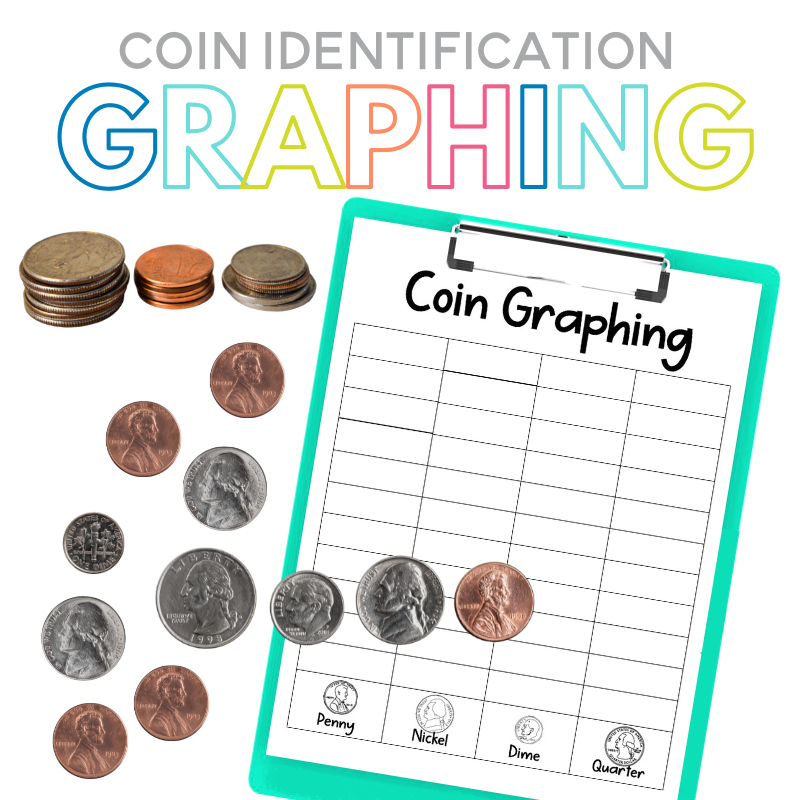
Coin Anchor Chart
Before starting a coin graphing activity with your students, it’s important to create a coin anchor chart that they can reference. This anchor chart should include the name of each coin, its value, and what the front and back of the coin look like.
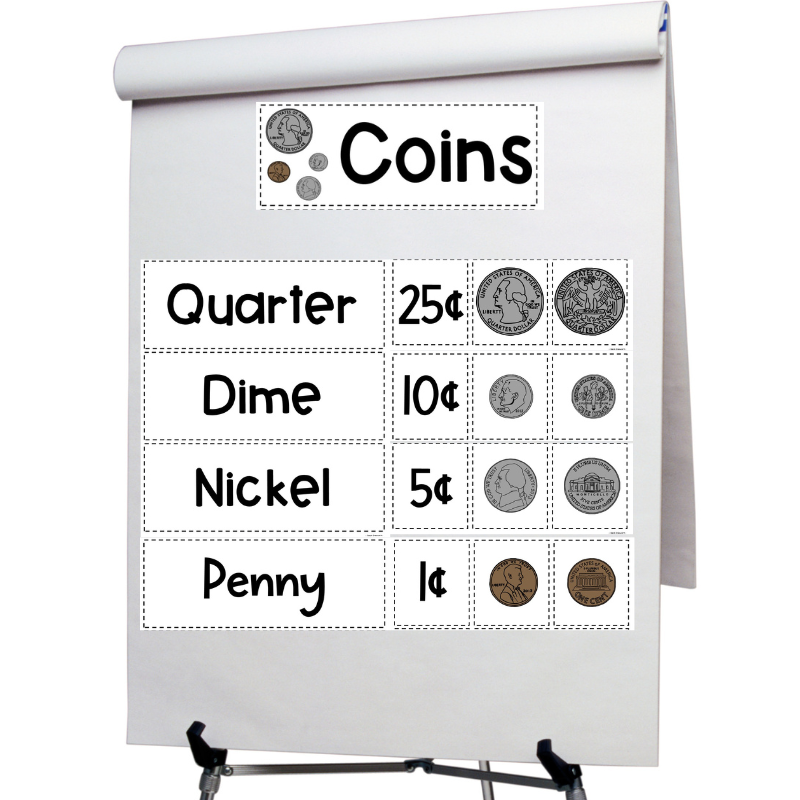
Coin Graph Worksheet
Now you are ready to create a coin graph! Each student will need a copy of the coin graph and a small set of assorted coins including pennies, nickels, dimes, and quarters. I recommend giving each student around 10 assorted coins to start with so they don’t get overwhelmed. You can give students the coins in a plastic egg or ziploc bag.
First, students should sort the coins. A coin sorting mat can be helpful for this. Coin sorting mats are available inside of my resource, Coin Identification Activities and Worksheets for Kindergarten. If you are looking for more sorting activities for kids check out this post, Sorting Activities.
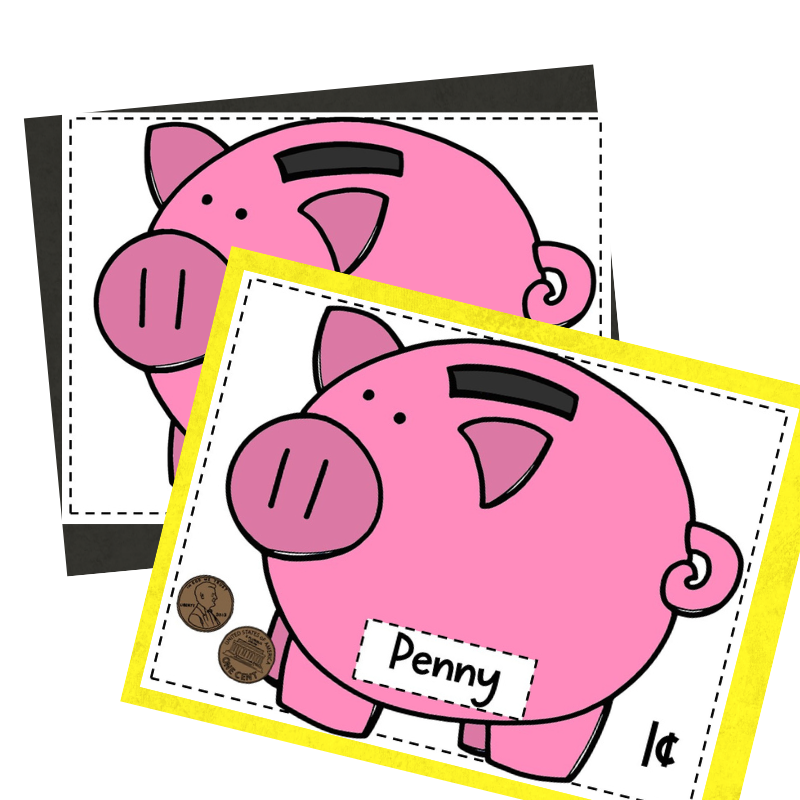
Next, students will count each type of coin and complete their own coin graph. Students will count each coin that they have and color the correct number of boxes to match. A graph is a great way to help students visualize data.
This coin graph is available to print inside of my resource, Coin Identification Activities and Worksheets for Kindergarten.
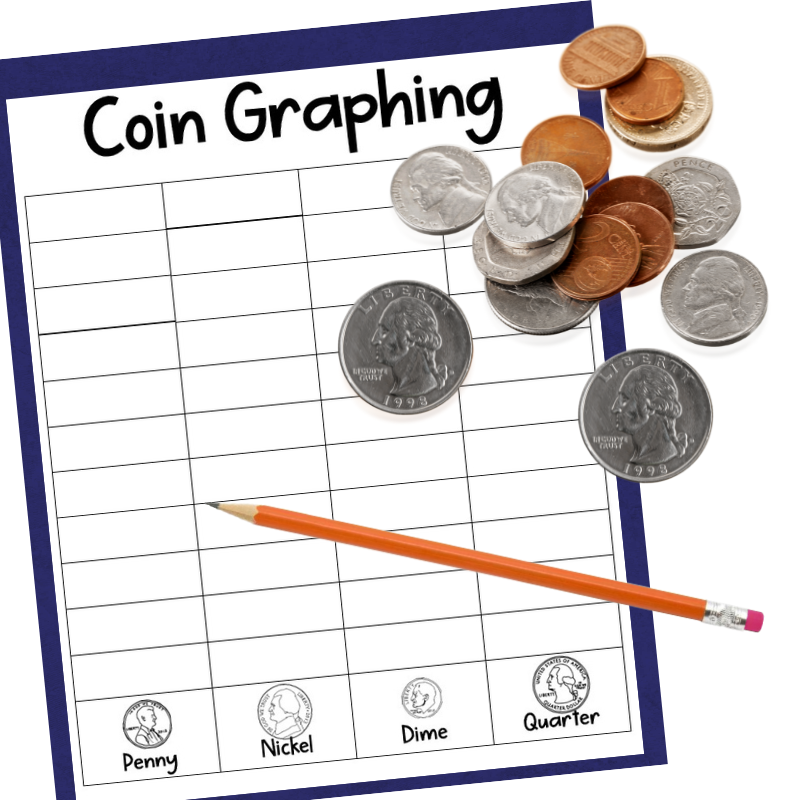
What skills do kids learn graphing?
- Counting
- One-to-one correspondence
- Math vocabulary (more, less)
- Comparison of quantities
- Data collection and organization
Related Post: Number Coloring Worksheets
Questions to Ask Kids about their Coin Graph
After students complete their coin graph, here are a few questions you can ask them to help take their learning deeper and develop math vocabulary:
- What coin did you have the most of?
- What coin did you have the least of?
- How many pennies did you have?
- How many nickels did you have?
- How many dimes bears did you have?
- How many quarters bears did you have?
- How many coins did you have in all?
FAQ About Coins for Kids
Here are a few common questions about teaching coins and money to kids.
How do you teach coins to kids?
- Let children explore with coins and make observations about the r
- Create a coin anchor chart together
- Encourage students to sort coins
- Create a coin graph
- Practice using coins in a real-life setting like a grocery store.
- Coin worksheets
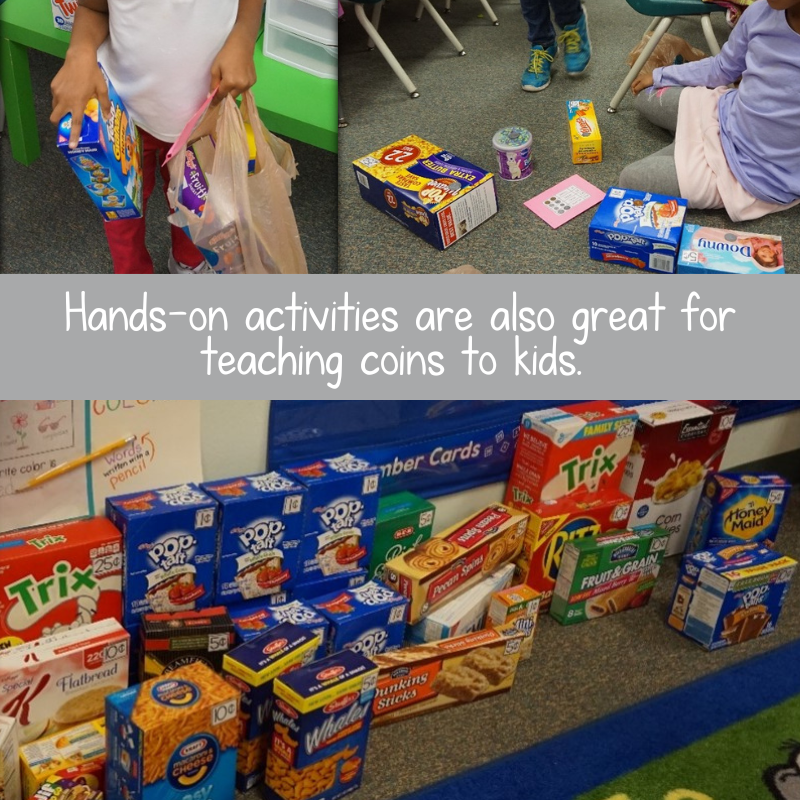
What are the values of U.S. coins?
- A penny is worth 1 cent.
- A nickel is worth 5 cents
- A dime is worth 10 cents.
- A quarter is worth 25 cents.
When do kids learn coins?
Typically children learn the name and how to recognize specific coins around 4-5 years old. Coins are typically taught for the first time in Kindergarten.
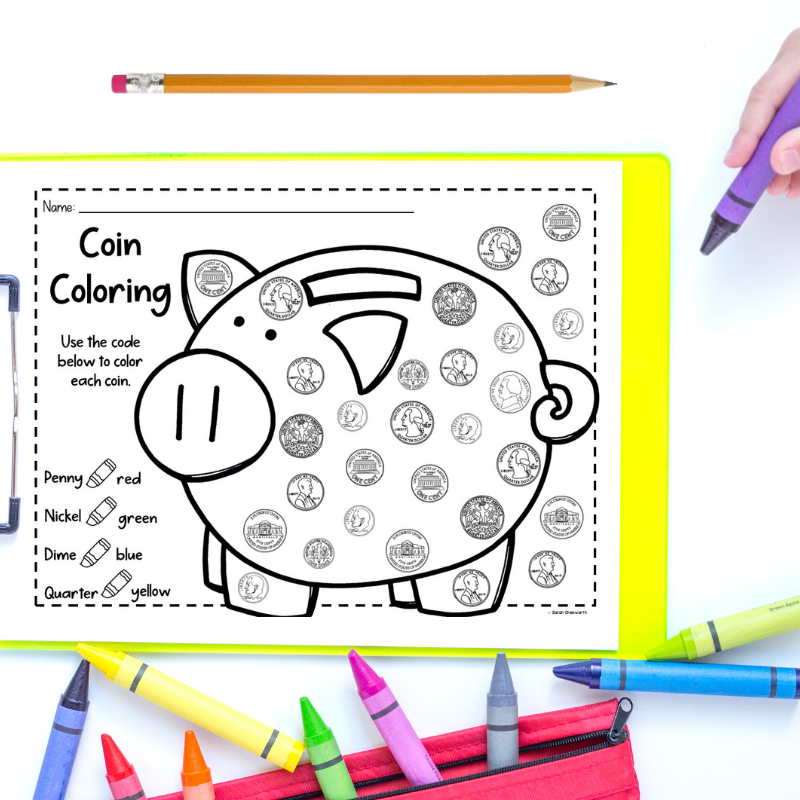
What grade do kids start learning to count coins?
Usually in first-grade students will start learning to count groups of coins according to their values. Start by teaching students to count groups of the same coins and then mix different coins. Skip counting by 5s and 10s is a prerequisite to this skill, so that’s a good activity to practice.
If you are looking for ideas to teach counting, check out this post: 12 Counting Activities to Teach Numbers 1-10
Coin Graphing
Coin graphing is a simple way to reinforce coin identification and recognition. Students will have fun filling in their coin graphs, and teachers can use a coin graph as an assessment tool at the end of the lesson. If you decide to try this activity in your classroom, we hope that you enjoy it!
